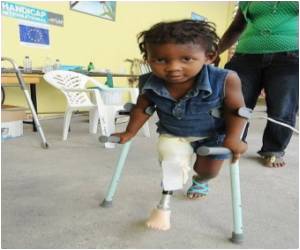Medical prosthetics could be designed with the help of a computational model of a swimming fish developed by scientists at the University of Maryland and Tulane University.

The study is the first to address the interaction of both internal and external forces on locomotion in large, fast animals like fish.
The interdisciplinary research team simulated how the fish's flexible body bends, depending on both the forces from the fluid moving around it as well as the muscles inside.
"The devices may one day help people regain control over their legs and walk again," Professor Avis Cohen, Department of Biology said.
"We understand to first order the neural circuit that controls the muscles for swimming or walking. Now, for neuroprosthetics, we need to understand how the muscles interact with the body and the environment - our model helps us do that," he added.
This research is published in the October 18, 2010 online early edition of the Proceedings of the National Academy of Sciences.
Advertisement








